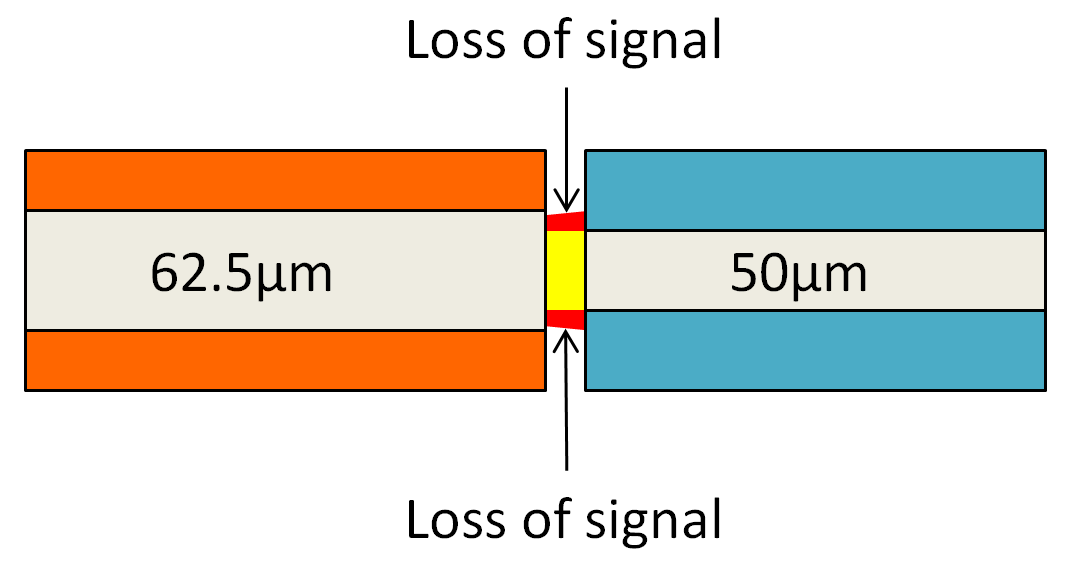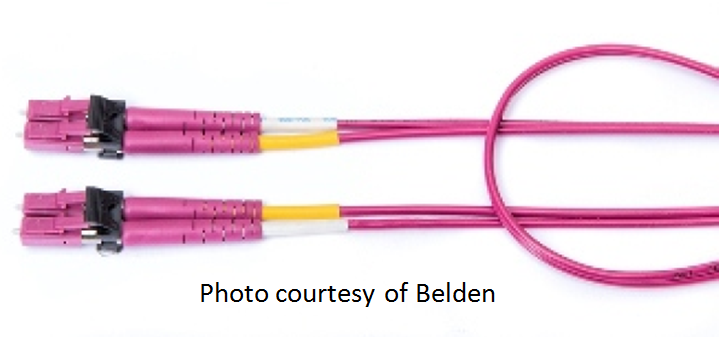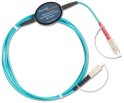Cable Testing 101: Considerations for Mixing Multimode Fiber Types
July 9, 2020 / General, 101 learning, Installation and testing, Best Practices
![]() In our last Cable Testing 101 series, we covered the difference between OM3 and OM4 50µm multimode fiber -- primarily the fact that the fiber core of OM4 has been constructed to provide better attenuation and higher bandwidth, thereby allowing for longer link lengths.
In our last Cable Testing 101 series, we covered the difference between OM3 and OM4 50µm multimode fiber -- primarily the fact that the fiber core of OM4 has been constructed to provide better attenuation and higher bandwidth, thereby allowing for longer link lengths.
With OM4 at a premium over OM3, many data centers and LANs not requiring the extra distance afforded by OM4 continue to deploy OM3 multimode fiber cabling, and it remains more widely deployed for that reason. And while the two fiber types can be mixed due to the same core size, there are some considerations in general when it comes to mixing multimode fiber types.

Staying in Your Budget
It's important for cabling infrastructure designers to know which type of fiber is being used, and it's recommended to use one type of fiber throughout an entire channel to avoid potential performance issues. Due to its lower attenuation and greater modal bandwidth, OM4 supports 40 and 100 Gig to a 150-meter distance while OM3 fiber only supports these applications to a 100-meter distance.
If you're troubleshooting a fiber channel greater than 100 meters that your customer claims is OM4, check the cable legend. It could be failing insertion loss because it was actually deployed with OM3. Depending on their length, using OM3 fiber jumpers on an OM4 link can also have an impact on loss-- especially if the link is pushing the upper limits of the budget to begin with.
What's more of a concern however is the mixing of OM3 or OM4 components with legacy OM1 62.5/125 fiber that has a larger core size of 62.5µm. Mixing different core sizes is akin to connecting two different size water pipes--when water flows from the larger pipe into the smaller pipe, it's evitable that you'll lose some. The same holds true for light. Mixing OM1 with OM3 or OM4 will cause high loss when transmitting from the 62.5µm core into the 50µm core.

Keep an Eye on the Color
Thankfully OM1 cable is orange in color, while OM3 and OM4 are typically aqua. That makes it easy to distinguish the two. But determining the difference between aqua OM3 and aqua OM4 cabling isn't as simple unless you can access and easily read the legend on the cable.
In most of Europe, and starting to gain ground here in North America, is the use of Erika violet for OM4 components. So if you see a "pretty in pink" cabling plant, you'll know right away that you're dealing with OM4.
What About My TRCs?
 If you're testing an OM4 cable plant, you don't need to worry about the fact that the Test Reference Cords (TRCs) that come with Fluke Networks CertiFiber® Pro are made with OM3 fiber. The fiber used in these TRCs features tighter core concentricity (i.e., common center) required to maintain Encircled Flux compliance, and you can use them to test any 50µm multimode fiber since we are measuring optical loss of the link not modal bandwidth. But if you're testing legacy OM1 62.5µm OM1 fiber, you'll need to make sure you have a matching core size in your TRC. Not a problem -- 62.5µm TRCs are available from Fluke Networks as an optional accessory.
If you're testing an OM4 cable plant, you don't need to worry about the fact that the Test Reference Cords (TRCs) that come with Fluke Networks CertiFiber® Pro are made with OM3 fiber. The fiber used in these TRCs features tighter core concentricity (i.e., common center) required to maintain Encircled Flux compliance, and you can use them to test any 50µm multimode fiber since we are measuring optical loss of the link not modal bandwidth. But if you're testing legacy OM1 62.5µm OM1 fiber, you'll need to make sure you have a matching core size in your TRC. Not a problem -- 62.5µm TRCs are available from Fluke Networks as an optional accessory.




